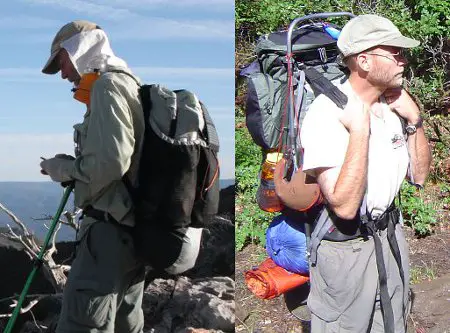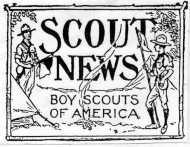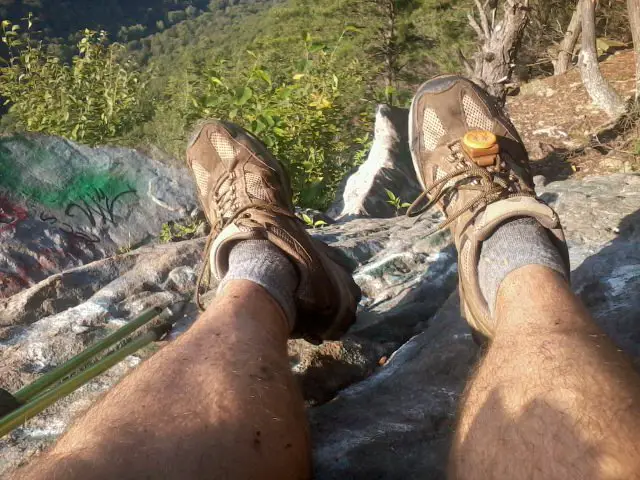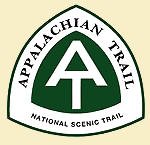Scoutmaster Musings
Archives:
2023 2022 2021 2020 2019 2018 2017 2016 2015 2014 2013 2012 2011 2010 2009 2008 2007 2006 2005
Philmont Prep

 Next month (November) will be the annual Philmont registration lottery when many thousands of units will sign up for a few thousand 2016 treks. Best of luck to you all!
Next month (November) will be the annual Philmont registration lottery when many thousands of units will sign up for a few thousand 2016 treks. Best of luck to you all!If your troop or crew is already accepted for a trek next summer in 2015, then you won't be participating in that lottery, but you should be participating in lots of pre-Philmont preparation this winter. Philmont supplies you with lots of literature and preparation advice. Their planning calendar page is a good overview.
There are a few areas that are easy to overlook, put off, or skimp on - resulting in a less-than-wonderful trek, or no trek at all. Over the next seven months, make sure your crew considers and completes everything required by Philmont, plus items that will just make your trek a better experience.
- Training - This past spring, I presented Red Cross Wilderness First Aid training to a crew just two days before they left for Sea Base. They had overlooked the fact that no one had current certification and the BSA is adamant about having at least TWO members of each high adventure crew currently certified in Wilderness First Aid and two currently certified in CPR. This crew was lucky that I was available on short notice. Wilderness First Aid training is often difficult to find, so get your two people going now, not next spring.
Youth Protection Training and Hazardous Weather training are also required. You may need other training, depending on what activities you plan to do.
And, you may not know it, but every adult participant must be a registered BSA member so get those adults signed up. - Tour Plan - Depending on your council, it may take a month or more to approve your tour plan after you finally get it correctly entered into MyScouting.org The process of gathering all the required information from various families can take many days. This information includes vehicle data, insurance, leader training, and travel itinerary. If it's not complete enough, and within the BSA parameters, your tour plan will be rejected and you can try again. and again. and again.
- Physical Conditioning - Of the hundreds of Scouters I've asked, by far the main thing they wish they would have done differently for Philmont was more backpacking practice before the trek. We are so busy that setting aside an hour a day and two hours on a weekend day just doesn't fit in many schedules. Without that conditioning of feet, legs, heart, lungs, and back, you are destined to a grueling 10 days on the trail. Many scouts are already active with athletics, marching band, and other extra-curricular activities, but those that are sedentary will drag down the entire crew.
At least three months before the trek date, regular hiking and other aerobic activities should be set up and tracked for the crew. The crews I participated on had three hikes every week and crew members had a minimum expected number of miles they were to cover before the trek. That worked well for us. - Equipment Use - Purchasing new water filters, stoves, and tents just before your trek is not wise. Hitting the trail with new gear that is unfamiliar to the crew is a recipe for expensive mistakes and a terrible time. Acquire gear well before the trek and ensure everyone knows how to use, and has practiced with it, and has demonstrated their skill with it. This practice can be done at troop meetings or special trek crew gatherings.
- Teamwork - Being a trek crew leader is a great opportunity for one scout to lead. He will have a distinct role at Philmont and staff members will address him directly rather than the adults in the crew. I just loved this on my Philmont treks! It really helps if you can get him used to that role of leading this small group of peers and adults before the trek begins. Actually, getting this group to work together as a team is just as important. Defining, and communicating, what is expected of the adults is a critical pre-trek activity, too.
Planning, and requiring participation in, some practice camp-outs using the gear for the trek works great. Have the scouts determine a location, route, and schedule for a couple 2-day or 3-day backpacking trips in the months before Philmont.
Each crew will have a couple other specific roles to be filled. The Chaplain's Aide promotes daily devotions and the "Duty to God" patch. The Wilderness Guia promotes the Leave No Trace principles and Philmont Wilderness Pledge within the crew and helps the crew follow them.
I feel it's also a good idea to ensure every scout realizes he will be expected to perform all tasks at some point in the trek, including navigating, cooking, and cleaning. - Merit Badges - Philmont recommends scouts have completed Backpacking, Camping, Climbing, Cooking, First Aid, Orienteering, Hiking, Nature, and Wilderness Survival before their trek so they are skilled in the tasks they will face. Philmont isn't really a place to learn the skills, but is an opportunity to use them. A fun 60-mile trek can become a frustrating 80-mile trek with poor navigation skills. The preparatory backpacking trips can be great for these, but if some scouts have not completed them, Philmont provides many miles and days to fulfill the requirements. Doing merit badges on a trek can be difficult with most of the day full of hiking and program, but Astronomy, Weather, and Wood Carving could be considered.
Seasoned Philmont Folks - Do you have other advice to pass on to Philmont first-timers?
Scout On
| Leave Comment |
Posted: 15:36 10-08-2014 1121
Top 10 Life Skills Merit Badges


Fulfilling the vision of the BSA to prepare scouts as responsible, participating citizens and leaders is a real challenge. A responsible citizen can take care of himself, his property, and his family. Very few of the boys I've met in Scouting came with a built-in sense of responsibility and none have had an innate ability to fix any problem. In this affluent area where I live, many boys I've dealt with have been protected at home to the extent they are ill-prepared for most any challenge that might rise against them. They are often also under the impression that parents will rescue them from any situation.
Through the outdoors program of Scouting, these scouts receive lots of opportunity to practice and improve their self-sufficiency skills. They learn to plan, prepare, and participate in order to achieve goals, overcome obstacles, and lead others. The patrol and troop program provides a focused agenda - scout skills and leadership - but does not provide much in the way of real life skills.
That's where the merit badge program comes into play. The dozens of merit badge topics allow a scout to try out new things, expand his interests, and possibly develop a career direction. Some merit badge topics are recreational, others are career-oriented, an others are life skills.
To reach the Eagle rank, each scout needs to complete these merit badges: Camping, Citizenship in the Community, Nation, and World, Communication, Cooking, Cycling or Hiking or Swimming, Emergency Preparedness or Lifesaving, Environmental Science or Sustainability, Family Life, First Aid, Personal Fitness, Personal Management
After that, it's up to him to choose merit badges that interest him. All too often, the badges are done because they are being offered at troop meetings, or at summer camp, or merit badge fair, rather than because they sound interesting to the scout. It's better for the scout to review the topics and choose those he wants.
If I could recommend merit badges with the most useful skills that will most likely help the scout as he leaves home, lives on his own, and starts a family, this would be my list:
- Astronomy - gets the scout in touch with his universe. A little knowledge of constellations, planets, moon, and sun helps with seasons, time, and direction.
- Automotive Maintenance - knowing more than where to stick the gas and the key can save hundreds of dollars and keep a car running many more years. The scout might also recognize and troubleshoot roadside problems.
- Electricity - with electric power in every home, understanding how it works and what might go wrong is good stuff.
- Genealogy - as a young person goes out on their own, a strong tie to family provides support. By recognizing your place in your family's history, and being aware of that history, a sense of belonging helps when loneliness sets in.
- Home Repairs - I think this one is obvious! No scout should ever need to call on a Handyman service to make small repairs around his home or apartment.
- Pets - provides practice in caring for helpless beings that rely completely on you for life. Many scouts will have pets when they are adults, and it's good practice for kids as well.
- Plumbing - have you seen the price of plumbing repairs? Everyone will have broken pipes, replaced hot water heater, or leaking faucets, sinks, or toilets at some point. This also gets the scout more aware of how a house works.
- Sustainability - Yes, it's an optional Eagle-required badge but, if the scout does Environmental Science, he should do this one as well. Energy conservation and sustainable practices will only continue to become more important and more commonplace. An awareness of ways to reduce, reuse, recycle, and sustain the planet is expected of everyone.
- Traffic Safety - Too many youth still die in vehicles. Since most scouts drive, there's no reason they shouldn't complete this badge. It's yet another review of being a safe driver, and every review helps.
- Weather - Awareness of developing weather can be a life-saving skill as well as protecting property from damage.
OK, since Sustainability is on the Eagle-required list, which merit badge should be listed instead?
Scout On
| See 4 comments | Leave Comment |
Posted: 9:15 10-01-2014 1118
Alumni Relations


Did you have a family reunion this summer? What about your Scouting family?
When a scout finishes his time with a troop, that is all too often the end of his Scouting experience. He's off to college or work, and no longer has time for Scouting. And, no one ever tells him he's still welcome to come back and visit.
Troops usually put effort into recruiting boys, and then effort into keeping them involved until they turn 18. After a scout ages out, or makes the earlier decision to stop participating, that is often the end of the troop's effort with that person, but maintaining a relationship with past scouts has many benefits for both the troop and scout.
The past scout has contact from home, support when he may feel alone out in the world, and reminders of the values presented in Scouting.
The current scouts learn more about life after high school, see that Scouting values will stay with them, and are shown that their troop cares about them, even outside Scouting.
So, how might your troop better maintain relationships with past scouts?
- Contact Info - maintain email and postal address information of past scouts and their parents.
- Newsletters - troop scribe can maintain a list of alumni emails and include them on newsletters and other communications of interest.
- Christmas Cards - a recap of the troop's year and plans of adventures to come.
- Annual Troop Photo - include scout names, patrol names, and adult changes that happened since last year.
- Winter Break Party - college students are often home on break from Christmas to mid-January. That's a perfect time to invite alumni to a winter party so they can catch up with old patrolmates and see how the troop is getting on.
- Family Picnic - Early June can be open for many young people finishing a year of school and not yet starting a summer job. Perfect time for a reunion party.
- Birthday Wishes - historian duties could include sending a birthday card to past scouts, signed by the current patrol leader of his old patrol, the senior patrol leader, and the scoutmaster.
- What Else? - leave a comment below with ways your troop stays in touch with past scouts.


The BSA is working on improving long-term relationships with past scouts and keeping them involved as adults.
The BSA Scouting Alumni Association offers a patch to new alumni, along with a bunch of other tidbits and quarterly newsletter. There is a cost to be a member.
If you're interested in acquiring another square knot, there is an Alumni Award Knot for scouters that identify, engage, and participate with BSA alumni.
Scout On
| Leave Comment |
Posted: 14:45 09-18-2014 1116
Perseverance


It's been 6 years since Heather Dorniden won this 600m collegiate race, but her demonstration of perseverance will never fade.
It might be a bit long for a Scoutmaster Minute, at 2.5 minutes, but I think the message of never giving up no matter what happens is worth it.
At least having this video stored on your phone to share with a scout when he's frustrated with some challenge would be a good bit of encouragement.
To fall from first to last in the blink of an eye and then have the strength to get back up and keep racing - and win - is just inspiring!
Some people quit the race, others get up with a goal of just finishing, but a few push on doing the very best they can until the finish line is crossed.
Scout On
Or, if you prefer a hollywood version...
| Leave Comment |
Posted: 10:33 09-15-2014 1115
What Weighs Us Down?


My Philmont pack started out at 45 pounds in 2005. My long-distance hiking pack now weighs under 25 pounds. You can see the difference in this image.
My time on trail is much more enjoyable and there is nothing I used to carry that I'd still like to have along but don't. Besides picking an interesting location, reducing our burden in the wilds is about the best way to make backpacking more fun - making the experience fun is a key element to a successful scouting program.
What is it that was so heavy and weighed down my pack so much? Well, it was mostly inexperience and obediently following a Philmont checklist.
So, here's a handful of advice to help you move your troop to lighter, more enjoyable, trek adventures.
Since Christmas is looming on the far horizon, and summer is pretty much over, now is a good time for scouts to review their gear and consider what to replace for next year.
- The Big 3 - shelter, sleeping system, and pack comprise a large part of the total weight a backpacker carries, sometimes more than 16 pounds. A person can drop the combined weight of those items to under 9 pounds without a lot of effort.
- too much clothing - On a 3-day or 3-week trek, the clothing needs are identical.
Just 2 or 3 pairs of socks and underwear, 2 shirts, 1 pair of zip-off pants and 1 pair of shorts - not a fresh one for every day. You can wash items on the trail and dry them as you hike or rest in camp. Additional items for warmth and rain, depending on the season and location, and you're set. - too much water - We stop at a stream to get water. Everyone fills their 3 water bottles and we're off hiking again. Two hours later, we pass another stream and fill bottles, even though everyone has 1 empty, 1 partially used, and 1 untouched. That's an extra 2 or 3 pounds of water carried by each person.
Using your route map, figure out where water stops will happen. Take on just enough water, plus a bit extra, to reach the next stop.
Fill your stomach with water first, then your water bottles. If you drink your fill right at the water source while filtering, you need to carry much less in bottles on your pack. - Nalgene water bottles - These are the silliest, most common, constantly perpetuated myth in Scout Camping. You have to have a Nalgene - they are indestructible! But, they also weigh 6 or 7 ounces each, empty! A disposable plastic water bottle weighs less than 1 ounce and holds about 60% as much water. A scout told to bring 3 Nalgenes is carrying over a pound of plastic when he could be carrying just 5 lightweight bottles and saving over 13 ounces. Also, having 5 smaller bottles means one destroyed bottle is a minor impact. And, the bottles are free rather than $10 or so for each Nalgene.
- too much food - I can cut 2 pounds off my pack by eating a big meal just before starting a trek and as soon as I finish. This can be food left in a vehicle, or a restaurant or store stop. For the days on the trail, people talk about 6000 calories a day and more - that is totally overboard. Scouts rarely hike more than 10 miles in a day, and that takes only about 1500 calories. Add to that the base need of 1500 calories a day and you've got 3000 calories per day. Nearly everyone these days already has a calorie surplus in stored fat, so even a daily deficit of 500 calories is just fine for a few days.
With a well-planned food supply providing about 125 calories per ounce, a person needs about 1.5 pounds of food per day. If you packed for 6000 calorie days, that's an extra 1.5 pounds you're packing for every day of your trek - a 4-day trip has 6 extra pounds.
Don't forget the food packaging! You can cut 10-20% of the weight by repackaging into zip-locs. - too much fat - Most of us, especially adults but scouts too, have more fat than we need on our bodies. Taking a couple months before your trek to whittle away at that extra weight means less to carry, and fewer calories needed each day. Losing 10 pounds of body fat is 10 pounds you don't have to carry over the mountains.
- too much stuff - A deck of cards, cribbage board, MP3 player, scout handbook, and other items to fill every pocket, crevice, and gap in your pack. They all add weight and are rarely needed. Just leave it at home.
- Fear - We carry too much of all these different things because we fear. Fear being hungry, so we carry too much food. Fear being cold or dirty, so we carry too much clothing. Fear being bored, so we carry toys, games, and books. Fear is Heavy.
We overcome our fear of things going wrong by preparing physically and mentally, and by honing our skills and planning our trek. When we're confident in our tested abilities, we put our faith in ourselves rather than in our equipment.
A final note - Scouting is an outdoor classroom. We're not here to create super-skilled wilderness experts, but to help boys grow into self-sufficient citizens of strong character. The challenge of becoming an experienced backpacker is just another opportunity for a scout to work on his character, physical abilities, and teamwork. It's ok to carry 40+ pound packs, but a lighter pack opens up many more opportunities and expands the classroom.
Scout On
| See 1 comment | Leave Comment |
Posted: 9:25 09-10-2014 1114
Scouts in the News


Here's a few news blips about Scouts this week. The good, the bad, and the ugly.
- Most Pathetic - troop treasurer embezzles $16K from scouts.
This is a way too common occurrence. A few tips to help prevent this sort of thing:- Use checks rather than credit cards.
- Require monthly financial statements, verified by a second person checking the bank statements.
- Require multiple signatures on transactions.
- Require receipts for reimbursements.
- Most Inattentive - someone steals $3.5K from scouts in a cigar box left unattended.
The story says it was full of donations which should be a mistake since scouts do not solicit donations. - Best Eagle Project - Eagle service project to create book-exchange free libraries.
When I hiked the Ice Age Trail last year, I saw a few tiny book-swap libraries in front of people's homes right on the street. This might be a cool idea for an Eagle candidate in your troop! - Best Memorial - scouts and friends finish Eagle service project for deceased scout.
When a youth dies, there's not much we can do, but this troop paid their respects by completing his project for him. - Silliest - scout leader hottest husband in country?
Silly, just silly. :-) Not so much the story, because he sounds like a great guy, but the whole idea of hottest husband contest. - Best Campout - assisted living seniors.
This troop found a great way to interact with older community members in a meaningful way.
If you'd like to see your scouts "In the News" locally, check out these tips and pointers. We could all use a little good press out there.
Scout On
| Leave Comment |
Posted: 16:08 09-09-2014 1113
Nature Requirements


Hiking 4 miles just as the sun came up today offered me a cool, crisp, clean, clear hour outside. I was reminded that fall is just around the corner and summer is fading quickly as schools are open and wearing white is now a no-no.
As I was sitting outside at lunch, writing my latest story and noticing this little guy soaking in the sun's warmth on a flower stem, I also thought of all those scouts that have put off their 2nd Class and 1st Class nature requirements over the summer. Depending on where they live, they will soon be in for a difficult time completing them. Identifying 10 wild animals and 10 native plants is still easy to do around here now, but with leafs dropping, birds migrating, animals hibernating, and snow covering the ground, it will be nearly impossible in two months or less.
If you've got scouts hoping to reach 2nd or 1st class before spring, some encouragement to look for animals and plants might be just what they need.
Scout On
| See 1 comment | Leave Comment |
Posted: 15:24 09-02-2014 1111
AT Hike page Updated
I've posted my trail journal, photos, and map from my short Appalachian Trail excursion. You can review it all at AT Hike page.
I've been out walking 4 to 8 miles on the local trail this past week to keep my knee moving. It's feeling much better and I will be spending days over the next month taking in some local hikes around the Twin Cities. I have a book titled "60 Hikes Within 60 Miles" for Minneapolis and I'll check out a few of those.
I've been out walking 4 to 8 miles on the local trail this past week to keep my knee moving. It's feeling much better and I will be spending days over the next month taking in some local hikes around the Twin Cities. I have a book titled "60 Hikes Within 60 Miles" for Minneapolis and I'll check out a few of those.
| Leave Comment |
Posted: 12:36 08-29-2014 1110
3-1

 I think a good question to ask yourself when you are participating in a recreational activity, such as a long hike, is: "Is the effort I'm expending worth the enjoyment I'm receiving?"
I think a good question to ask yourself when you are participating in a recreational activity, such as a long hike, is: "Is the effort I'm expending worth the enjoyment I'm receiving?"Most outdoor activities include some strenuous effort that result in rewards. For example, hiking to a mountain top, or paddling across a lake, or climbing up a cliff. Parts of the activity are grueling work, but the rewards of beautiful views, exciting rapids, or new terrain are worth the expected work.
When the answer to the question is "No, the effort is more than the rewards," then it's no longer recreational. And, I feel, it's time to stop. That happened to me earlier this week, for the first time on my long hikes.
My left knee became painful the second evening of my hike, most likely because I was pushing too hard on very rough, very steep, downhill portions of the trail. The next day, the discomfort grew until it hurt on every step - up, down, or level. For 3 more days, I continued on with the hope it would eventually work itself out but it maintained a fairly consistent irritation.
So, when I arrived in Duncannon, PA on Sunday night, I had a plan to visit a doctor in the morning and then make a decision. If the knee should feel better in 2 days or less, I would continue. If it would take longer than that, I could not afford to sit in a town for 3 days or more because I would miss my already small window of completing the trail before winter weather.
Monday morning, the doctor checked me out and said it looked solid with no major tearing and I could continue to walk on it - but recommended slower pace and even terrain. She said continuing my hike on the trail would most likely not make it worse, but it would not get a chance to heal and the pain could take a long time to abate.
This is when the question came up. A 2 hour debate with myself and I concluded: "No, I'm not enjoying this." The ongoing discomfort from the past 4 days would continue for the near future and I would not have fun.
I arranged a 20-mile shuttle to Hamburg, PA where I caught a 1,106-mile greyhound bus ride home. Late Tuesday night, after 24+ hours touring the country, I was home. I took yesterday to rest and come to grips in my head with my first long distance hiking failure.
Failure is the description that I keep coming back to for this hike. I had a goal to walk a certain distance in a certain time and reach the trail end. I failed to do that, actually didn't even come close. So, my trail record is now 3 wins and 1 lose. I completed the AZT, SHT, and IAT. I didn't complete my first effort with the AT.
It's pretty easy to start coming up with better ways to look at failed goals to make them not seem so bad. I hiked 123 miles in 5 days. I walked in 3 states - WV, MD, and PA. I learned a lot for future hikes. I met some interesting people. But, for now, I'm just sticking with 3-1 and admitting to myself that, however I look at it, I didn't reach my goal.
I'll share tomorrow some of the things I learned on this short trek and my plans for some shorter hikes the rest of this year.
PS: This picture is the last one I took on my hike. I am resting on a mountain before the final 600-foot steep, rocky, drop into Duncannon.
| See 2 comments | Leave Comment |
Posted: 9:50 08-21-2014 1109
Trail Journal
The shelter I stayed in last night was 1.5 miles from a scout camp. The visitor registry had dozens of entries from scouts that had hiked there over the summer for their advancement requirements. Lots of fun to see. Other than that, haven't seen any scouts on the trail. But, met a hiker who is an Eagle scout.
| Leave Comment |
Posted: 7:19 08-17-2014 1106
Day 01 - Cowell Shelter
 I walked 68165 steps on the trail today.
I walked 68165 steps on the trail today.I traveled about 32 miles today.
My first day on the Appalachian Trail has been spectacular! At Harper's Ferry, this sign started my journey at about 6:30am and I'm now settled in Cowell shelter almost 32 miles from my start. Check out my current location on the map. I've already met more hhikers than on my entire AZ Trail hike, but nearly all are day or short-trip folks. I found one guy that has been hiking the whole trail and is now following behind me. Another guy, Rising Star, let me hike with him to this shelter. He's a wealth of information, having hiked arund here often. He's heading to NY, but we'll separate tomorrrow. The cicadas are amazingly loud tonight as the sun has set and things cool down.
| See 1 comment | Leave Comment |
Posted: 19:03 08-13-2014 1102
Half Hike

 Tomorrow starts this year's long hike for me. I'll be taking a plane to D.C., then bus, metro, and train to Harper's Ferry, WV where I'll find the Appalachian Trail.
Tomorrow starts this year's long hike for me. I'll be taking a plane to D.C., then bus, metro, and train to Harper's Ferry, WV where I'll find the Appalachian Trail.The trail runs from Springer Mountain in Georgia to Mt. Katahdin in Maine which is about 2180 miles, but I'm only doing the northern 1165 miles this summer/fall - that's why I'm calling this my "Half Hike". Other commitments both in the earlier summer and in October have allowed me only 55 days to hike so this is how far I figured out I can go - at a pretty brisk pace.
About 2000 people or so start hiking from GA to ME each year and they all start around the same time. This creates a big bubble of people moving up the trail. Since they have different paces, the bubble spreads out the farther north it moves. I will be starting my hike at the very tail end of the bubble, and hopefully will catch up to hikers every day. I'm excited about this, but also a bit concerned...
Who will I most likely find on the trail? Well, those that are slow, injured, or got a late start. Possibly people not having a really good time. But, they've all made it over 1000 miles, so I plan to be as encouraging as I can, and learn as much from them as I can quickly.
I'm starting on a fairly easy area of the trail so I have a few hundred miles to "warm up" before reaching what seems to me like the most challenging part - the White Mountains. Since I'm hitting these barren mountain tops late in the season, I will see cold temps and possibly snow. I'm hoping for a warm, dry Indian Summer in the northeast! :-)
As usual, you can follow my progress here since I'll be carrying my Spot tracker that will blip to a satellite every 15 minutes or so, and I'll be blogging every day.
I've made it possible to read comments you leave here on my cellphone and reply to them - assuming I have coverage out there. Just a 'howdy' can be a real boost when I've been plodding down the trail for days on end, so I look forward to hearing from you.
Also, I would appreciate it if you could tell any hiker friends you might have about my hike so they can follow along.
Finally, anyone living anywhere near the Appalachian Trail is welcome to contact me and hike along. An unexpected night off the trail at someone's house has always been a great surprise!
Hike On
| See 1 comment | Leave Comment |
Posted: 13:41 08-11-2014 1100
Previous PostsComments:
Feb 25, 2023 - Joe Patterson
Just out of curiosity, are the Rockwell paintings on exhibit anywhere
Mar 16, 2023 - Adam John
Great question Joe! Have you checked out the Norman Rockwell Museum in
Stockbridge MA? (nrm.org) There is also the Rockwell Museum in Corning
NY. (rockwellmuseum.org) I believe the latter has more art. Hope this
helps!
Jan 21, 2024 - Johnna Downing
The Scouting museum at Philmont, Cimmaron, NM hopefully has the ones that
used to hang at the museum in Irving, TX. Good luck. Johnna
Scouting 2024 - Ask a Question - Add Content
Just for Fun: Socializing merit badge




This site is not officially associated with Scouting America
Find more Scouting Resources at www.BoyScoutTrail.com



Follow Me, Scouts
Recent Comments